
Those who live with nerve pain know that even the simplest daily tasks feel like torture. Did you know microdosing cannabis is a great way to soothe neuropathic misery?
If you’re dealing with neuropathic burning, stabbing, or tingling sensations on a daily basis, learn how to microdose cannabis to relieve pain and improve your quality of life.
Working together in carefully calibrated ratios, cannabis components such as Delta 9 THC, CBD, CBN, and Delta 8 THC can desensitize pain receptors, reduce inflammation, relax your muscles, and improve sleep—all without causing impairment or intoxication.
Our THC edibles are specially formulated to target those stubborn nerve pain signals and bring relief.
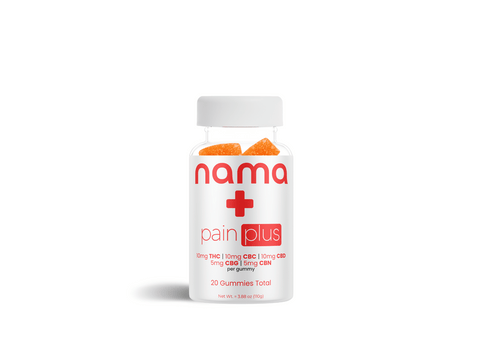
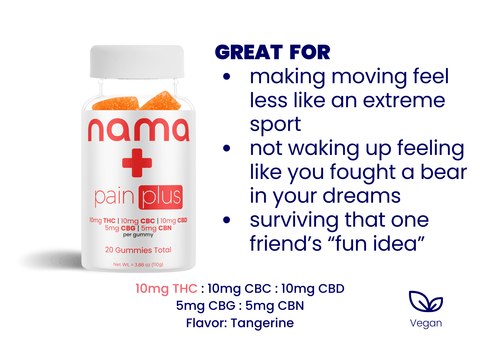
THC: 10 mg | CBC: 10 mg | CBD: 10 mg | CBG: 5 mg | CBN 5mg
What is nerve pain?
Neuropathic pain (or nerve pain) is a chronic condition caused by misfiring nerves that get damaged or dysfunctional. This can happen for any of the following reasons:
- Diabetes: high blood sugar levels can damage nerves over time, leading to diabetic neuropathy.
- Nerve injury: trauma from accidents, surgery, fractures, and spinal cord injuries can disrupt nerve function and cause chronic neuropathic pain.
- Viral infections: shingles, HIV, hepatitis, and other infections can damage sensory nerves and result in lasting pain.
- Autoimmune disorders: diseases such as multiple sclerosis can damage the myelin sheath that insulates nerves.
- Toxins: chemotherapy drugs, radiation, and alcohol can damage nerves and cause pain that persists even after the exposure to these toxins stops.
- Compression: conditions like carpal tunnel syndrome, sciatica, and tumors can compress nerves and trigger pain.
The pain often persists for extended periods of time and may have no obvious external cause. It can be severe and debilitating, greatly affecting the quality of life. The affected nerves could be anywhere in your body, making it hard to predict when and where you’ll hurt next. It might creep up your legs, then migrate to your back, then set the rest of your body ablaze.
How does neuropathic pain manifest?
Neuropathic pain is a shape-shifter, manifesting differently in each person, but people generally describe neuropathic pain as:
- Burning and stabbing sensations
- Tingling, pins, and needles feeling
- Numbness
- Hypersensitivity to touch
- Shooting, electric shock-like pain
- Muscle spasms and tightness
- Difficulty sleeping due to pain
However it shows up, nerve pain is no fun at all.
How is nerve pain treated?
There are ways to turn down the volume on your pained nerves. However, completely curing neuropathic pain is tricky. Several treatments can help rein it in so you can reclaim your life.
- Medications such as anticonvulsants and antidepressants are prescribed to calm overactive nerves.
- Topical creams provide localized relief when nerves in a specific area act up.
- In the most severe cases, surgery or electrical stimulation can interrupt pain signals.
The downside is these pharmaceutical and procedural treatments often come with unwanted side effects. Medications can cause drowsiness, dizziness, and dependency, while surgical procedures involve risks and recovery times. And no single treatment works perfectly for every patient.
This is why an increasing number of chronic pain patients are turning to cannabis for relief. Compounds such as THC and CBD show promise in interacting with pain pathways in the body and brain. Microdosing cannabis provides therapeutic benefits to patients without causing a high.
How does cannabis help with nerve pain relief?
Cannabis edibles and drinks may ease certain types of chronic pain. A combination of cannabis compounds has shown relief with neuropathic pain, but also sciatic, cancer, arthritic, and pain caused by fibromyalgia. A 2015 study found that cannabis might be effective in managing not only chronic and neuropathic pain but also spasticity due to multiple sclerosis.
Here are some ways in which cannabis compounds can bring relief from neuropathic pain:
- Lower inflammation. Chronic inflammation can damage tissues and nerves. Inflammatory immune cells release chemicals that make nerve fibers hypersensitive and overreact to stimuli. Inflammation around damaged nerves can directly exacerbate neuropathic pain. And key cannabis compounds are powerfully anti-inflammatory, helping break this painful cycle.
- Reduce hypersensitivity. They appear to calm overly-excited pain-sensing neurons and reduce the hypersensitivity causing chronic nerve pain.
- Protect nerves. Cannabinoids may limit neuropathic pain by protecting nerves from further damage and helping regenerate nerve fibers. A 2012 study found that a “combination of THC and CBD can be an effective therapeutic option for patients with neuropathic pain and other types of chronic pain.”
- Provide deep relief. THC and CBD seem particularly effective for deep tissue and neuropathic pain compared to other analgesics: “Treatment with cannabis is effective in reducing the intensity of pain… and the disability caused by chronic pain as well as the resulting anxiety and depression…. without generating severe adverse events.” (Bennici, et. al.)
- Allow opioid sparing. Patients report reducing or replacing opioids with cannabis for nerve pain relief, helping avoid opioid side effects. A research paper found that cannabis has led to a reduction in opioid use by 64% and improved the overall quality of the patients’ lives.
- Promote sleep and relaxation. The anti-anxiety and sleep-promoting properties of cannabis additionally help nerve pain patients rest, heal, and cope.
Major cannabinoids, Delta 9 THC and cannabidiol (CBD), can significantly reduce pain sensations mainly through the body's endocannabinoid system.
The endocannabinoid system and neuropathic pain
The endocannabinoid system (ECS) is an intricate network of signals and receptors. It helps regulate many important bodily functions: sleep, mood, appetite, and pain perception. Our bodies naturally produce endocannabinoids (“inner” cannabinoids), but we can also obtain them from plants (phytocannabinoids). THC and CBD interact with the ECS and its receptors to modulate many of those bodily functions—such as pain.
Cannabinoids bind to endocannabinoid (CB1 and CB2) receptors in the brain, nerves, and immune cells. When you consume them, cannabinoids mimic the chemical makeup and function of endocannabinoids throughout the body.
- In the peripheral nervous system, they activate cannabinoid receptors on sensory nerve fibers which interrupt the transmission of pain signals to the brain. This helps block pain at the source.
- Centrally in the nervous system, cannabinoids modulate and essentially “turn down” pain processing in the spinal cord and brain. They reduce the hyper-excitability of neurons that are overreacting and transmitting exaggerated pain signals.
- Cannabis also activates pain relief centers in the brain and limits the release of pro-inflammatory compounds, which further dampens pain perception.
Earlier we mentioned that cannabis helps reduce hypersensitivity in pain-sensing neurons that lead to nerve pain. The activation of CB1 and CB2 cannabinoid receptors is directly linked to this. THC activates endocannabinoid receptors to reverse allodynia, the pain sensitivity to normally non-painful stimuli. Even at doses that are too low to have direct pain-relieving effects, cannabinoids have managed to revere allodynia induced by inflammation.
…CB1 and CB2 agonists reverse allodynia induced by inflammation, even at doses that have not shown analgesic effects. It has been seen that the CB2 receptor is upregulated on the spinal cord in rats under inflammatory conditions, which may suggest that it plays an analgesic effect on peripheral sites, but also at central levels of the spinal cord. (Pantoja-Ruiz, et. al.)
Inflammation is often a major contributor to sciatic nerve pain, as well. Learn all about the therapeutic impact of cannabis for sciatica and how it can help extinguish the fire along this notoriously sensitive nerve.
Which cannabis compounds alleviate nerve pain?
The cannabis plant contains many therapeutic compounds that can provide natural relief for neuropathic pain. While THC and CBD are the most abundant and well-studied for pain treatment, compounds such as cannabinol (CBN) and Delta 8 THC also have potent analgesic and anti-inflammatory effects.
Let’s see how each provides nerve pain relief through unique mechanisms.
THC and nerve pain
THC, or tetrahydrocannabinol, is the main psychoactive compound in cannabis. At sufficient doses, THC produces a psychoactive high. But even at low doses, Delta 9 THC has powerful pain-relieving properties, especially for pain.
Here’s how it works:
- THC activates CB1 receptors to relieve pain. CB1 receptors are found abundantly in the brain and spinal cord as well as peripheral nerves. When THC binds to them, it disrupts the transmission of nociceptive (pain) signaling between nerves and the brain.
- THC also activates the brain's pleasure and reward centers to modify pain perception. That’s how it achieves the high—THC increases levels of dopamine, the neurotransmitter responsible for feelings of pleasure, motivation, and reward. By stimulating the release of dopamine, THC not only produces euphoria, but it triggers the body's own natural pain relief system.
- THC reduces nerve excitability. Remember how cannabis calms excessive electrical activity in damaged or inflamed nerves that are firing off erroneous pain signals? That’s THC doing it, suppressing the hyper-excitability of neuropathic nerves so they don't overreact to stimuli.
- THC helps reduce swelling and inflammation around damaged nerves that exacerbate pain.
- THC improves sleep. Since nerve pain often disrupts sleep, the sedative effects of THC can help patients achieve needed rest and sleep recovery.
If neuropathy interrupts your daily life, it may be time to explore THC microdosing. Our Euphoria THC gummies provide precision microdoses of premium THC designed specifically to calm aggravated nerves. With soothing flavors of juicy pink lemonade to excite your palate, these edibles make it easy to discreetly manage nerve discomfort throughout your day.
CBD and nerve pain
Cannabidiol (CBD) is another major cannabinoid with potent analgesic properties. Unlike THC, it does not directly bind to CB1 receptors. That’s why CBD does not produce any intoxicating effects. Instead, it interacts with the endocannabinoid system in a more modulatory way to relieve pain.
- CBD activates CB2 receptors. CBD binds to CB2 receptors located predominantly on immune cells and in the peripheral nervous system. This makes cannabidiol terrific for reducing inflammation that can exacerbate nerve pain.
- CBD inhibits the FAAH enzyme. FAAH (fatty acid amide hydrolase) is an enzyme that metabolizes and breaks down endocannabinoids such as anandamide, allowing them to work longer. Anandamide also binds to CB2 and helps dampen pain signals.
- CBD modulates the TRPV1 receptor. TRPV1 is involved in sensing and transmitting pain stimuli. By desensitizing it, CBD reduces the excitability of pain nerves.
- CBD has been proven to exert anti-hyperalgesic benefits that may result from underlying activation and desensitization of TRPV1 at the peripheral and spinal level. This suggests that CBD may have therapeutic potential against inflammatory and chronic pain. (Muller, et. al.)
A 2020 study revealed that CBD products were able to reduce joint pain and swelling, aiding in the treatment of conditions such as arthritis, rheumatoid arthritis, and multiple sclerosis.
Our delicious CBD gummies are a testament to these potent analgesic and anti-inflammatory properties. With every bite, therapeutic CBD goes to work desensitizing aggravated nerves, calming inflammation, and restoring your quality of life.
How does Delta 8 help with nerve pain?
Delta 8 THC is an analog of Delta 9 and may share some of its pain-relieving properties. But Delta 8 is less psychoactive than Delta 9, and even at slightly higher doses, it relieves pain while keeping you functional and clear-headed.
Here’s a great article about the differences in effects between Delta 8 and Delta 9.
Research on how Delta 8 works to alleviate chronic nerve pain is still limited, but here’s what we know so far:
- Similarly to Delta 9, Delta 8 binds to CB1 and CB2 receptors throughout the body. However, it has a lower affinity for CB1 receptors in the central nervous system.
- When it activates the CB1 receptors, Delta 8 inhibits neurotransmitter release and reduces excitability in pain pathways of both the peripheral and central nervous systems.
- Delta 8's activation of CB2 receptors decreases inflammation.
- The dual mechanism of Delta 8 by which it binds to both CB1 and CB2 receptors provides broad pain relief.
Delta 8 is great for microdosing and our gummies infused with hemp-derived Delta 8 are living proof. Order our delicious Elevate edibles and say goodbye to sleepless nights from radiating nerve pain.
Is CBN an effective pain reliever?
CBN shows terrific potential in relieving chronic pain. CBN is a minor cannabinoid that is formed from the degradation process of THC. Its potential benefits include appetite stimulation, reduced anxiety, improved sleep, and lowered pain and inflammation.
There isn’t any conclusive evidence that CBN can treat neuropathy. We believe its potent anxiolytic properties sure come in handy when the pain kicks in. CBN also appears to boost the effects of other cannabinoids for amplified relief, so that’s another good reason to include this minor cannabinoid in your microdosing regime.
The best thing about it is that, even though it is a byproduct of THC, CBN does not have psychoactive properties. Read more about the benefits of microdosing CBN every day.
Our CBN gummies are a good place to start. Pain-related insomnia is a pain in the butt for many of us—but it’s no match for our gummies. Packed with broad-spectrum CBD and a knockout 5 mg of CBN, sweet pain relief is a done deal.
Product QUIZ
Need help deciding what product is best for you? Take our quiz, just three questions until your perfect match!
The entourage effect for pain relief
Together, through the entourage effect, different cannabis compounds can provide enhanced pain alleviation. The entourage effect refers to the synergistic benefits that occur when multiple cannabis compounds are used together.
For nerve pain, the entourage effect can provide greater relief than isolated cannabinoids alone. The compounds work in concert to reduce the excitability of damaged nerves, relax muscles, improve sleep, and relieve distress, all the while providing broad, synergistic relief.
Full-spectrum CBD products allow you to leverage the wide-ranging analgesic benefits of the entourage effect without unwanted side effects. These are the best entourage effect gummies as they contain a harmonious blend of cannabinoids such as Delta 9, CBD, CBG, and CBN, along with terpenes and flavonoids that work in concert to provide natural, holistic pain relief.
Is your chronic neuropathy keeping you down? Meet our Relax Plus gummies with only 5 mg of THC and 25 mg of CBD in each delicious gummy. These watermelon treats will provide soothing relief to irritated nerves thanks to the anti-inflammatory prowess of cannabis. Their potent stress-relieving and antidepressant effects will help you reclaim a brighter, pain-free day.
How much cannabis should I take for nerve pain relief?
There isn’t a straightforward “take an X amount of cannabis” answer for this one. Microdosing cannabis is more of a personal quest; you start low and slowly increase to gauge what suits your needs best. Maybe you’re a 2 mg of THC-a-day type of person. Perhaps you need a solid 5 mg of THC per day to keep the nerve pain away.
Whether you’re a beginner or a seasoned cannabis enthusiast, start with smaller amounts of THC and listen carefully to what your body is telling you. Remember, everyone's experience is different.
Chat with a healthcare professional to ensure that medical cannabis consumption aligns with your well-being and won't interfere with any other medications you might be taking.
What are the best edibles to relieve nerve pain?
It’s really not that hard to choose the best gummies for your nerve pain, but we’re going to help you anyway. Just go for organic, lab-tested formulas with precise ratios of pain-killing and anti-inflammatory compounds. Choose edibles that contain low amounts of THC, CBD, and other cannabinoids.
- Let’s start with something energetic and uplifting with knockout analgesic effects. Our Energy gummies contain only 2.5 mg of THC and deliver long-lasting relief from flare-ups, inflammation, and irritation. These edibles are great for summoning the therapeutic benefits of the entourage effect, as 5 mg of CBD aids THC in relaxing your muscles and banishing pain.
- Some people prefer to go THC-less as they fear psychoactivity and unwanted side effects. They choose our broad-spectrum CBD gummies that contain only pure cannabidiol, but did you forget about the synergy of cannabis compounds? A combination of THC and CBD is much more efficient at treating pain and pain-related discomfort. So, don’t worry about the unwanted side effects of Delta 9 THC; the microdoses in our Bliss gummies provide the perfect entourage effect for nerve relief.
- Is that dreaded neuropathy keeping you up at night? We have the perfect double-whammy for your troubles: buy our Sleep Plus gummies and experience the prowess of anti-pain and pro-sleep THC and CBD. With 2 mg THC and 25 mg CBD in every blackberry-lavender-flavored gummy, you'll get the ultimate entourage effect for calming aggravated nerves and easing into a restful sleep.
- Try our CBN sleep gummies if you’re struggling with sleep caused by nerve pain. CBN can relax your nerves and promote healthy, uninterrupted sleep.
- Don’t forget about our mighty Delta 8 gummies. They are great at helping you achieve restorative sleep, relieve tension and soreness, and defog your brain.
- Gummies are a great on-the-go solution, but how do you feel about a nice cold glass of your favorite mocktail infused with our liquid THC drops? With only 2.2 mg of THC and 2.9 mg of CBD, these drops will uplift the mood and kick nerve pain right where it hurts.
Our gummies are great at providing relief but don’t expect instant relief. Edibles typically take between 30 minutes and 2 hours to kick in. This depends on your metabolism, the potency of the edible, and whether you’ve had something to eat beforehand. (Eating cannabis on an empty stomach can speed up absorption.)
Because they take a bit longer to produce their effects, gummies can last up to eight hours. So start with a small amount and wait at least 45 minutes before you decide to take more.
The effects of our THC drinks kick in faster than the gummies—you’ll feel the effects within 10 to 20 minutes—which is great if you’re thirsty and in pain. Your cannabis mocktail will keep you uplifted for 3 to 6 hours.
Where to buy the best THC gummies and drinks
When shopping for cannabis edibles, make sure you choose high-quality products from reputable sources. You want to avoid buying fake, ineffective, and potentially dangerous products that contain chemicals, pesticides, and other harmful ingredients.
If you’re looking for out-of-this-world hemp gummies and drinks, unmatched in quality or efficacy, you’re in luck. The best way to go is with trusted retailers that carry thoroughly tested products, so shop at nama and experience the benefits of microdosing cannabis for sweet pain relief.
Find more information in our guide to where to buy Delta 9 gummies in the US.
If delicious non-alcoholic craft mocktails are your thing, check out where to buy the best THC drinks.
Edibles for pain FAQ
Both THC and CBD are great for managing pain in their own ways. The choice depends on what type of pain you’re dealing with and how you respond to these two major cannabinoids. Generally, CBD is preferred for its therapeutic effects, while THC's mildly psychoactive nature tends to be more suitable for acute pain.
For pain management, both CBD and THC offer unique benefits. CBD is hailed for its anti-inflammatory potential. It offers a calming, relaxing effect and doesn’t get you high even at higher doses. THC, known for its psychoactive properties when taken at sufficient doses, interacts directly with pain receptors, potentially delivering immediate relief.
CBD is commonly linked to managing chronic non-cancer pain, while THC might better handle central pain. Some medicinal cannabis research suggests that CBD might be useful for chronic pain management.
Both sativa and indica strains can be beneficial for pain management. Indica is often associated with relaxing and calming effects. Sativa's energizing and uplifting qualities may help distract from pain or boost mood. Research conducted by the University of California hints at the possibility that indica strains provide better relief for phantom limb pain, while sativa might be more suitable for daily functioning. The answer depends largely on your personal preference and the nature of your neuropathic pain.
Cannabis gummies aren’t just a delicious treat but an effective and much better way to consume cannabis than smoking—especially for pain management. Here’s why:
- Gummies provide controlled doses, ensuring more predictable and consistent amounts of active ingredients such as CBD and THC. This control over the effective dose helps avoid overdosing or under-dosing, ensuring optimal and safer relief for chronic pain.
- Gummies offer a more discreet and convenient method of consumption, allowing users to avoid the potentially harmful effects of cannabis linked with smoking (e.g., exposure to carcinogens and tar, as observed in studies on the adverse effects of smoking cannabis).
- Smoking or vaping cannabis presents potential health risks that gummies effectively avoid. These unhealthy methods involve the inhalation of combusted or vaporized plant material, which can irritate the respiratory system, leading to coughing and phlegm production. The heat involved in smoking can generate toxic compounds, some of which may be harmful to the lungs. According to research, “cannabis is possibly unsafe when used in large amounts or long-term. Smoking or vaping cannabis can cause breathing problems. Vaping products containing THC have been linked to serious lung injury.” Gummies, on the other hand, offer a smoke-free, discreet, and user-friendly means to manage pain without risking respiratory problems, providing a safer and healthier alternative for long-term use.
- Another significant advantage is the duration of relief: gummies, with their slower but longer-lasting effects, ensure sustained pain management, enhancing daily functioning and minimizing the cognitive effects typically associated with smoking cannabis.
If you want to use medicinal cannabis to deal with neuropathic or other types of pain, ditch smoking and turn to the health-conscious THC edibles or our low-dose cannabis drinks. These methods offer precise dosing and a more controlled way to address pain effectively.
Inhaled cannabis might have the potential for managing nerve pain, as studies may have indicated. A 2013 study evaluated the analgesic effects of vaporized cannabis on people experiencing central and peripheral neuropathic pain. Surprisingly, both low and medium doses of vaporized cannabis demonstrated similar effectiveness in mitigating pain levels, which could offer hope to those with neuropathy, especially if traditional treatments have failed.
However, don’t forget that while inhaled cannabis shows efficacy, smoking it poses potential health risks. For a safer and more controlled method of consuming cannabis, small doses of cannabis in gummies and drinks might be a better and healthier choice for managing nerve pain without the associated harms of smoking.
The amount of THC in each Delta 9 gummy depends on the source and strength of the cannabis in the product. A typical Delta 9 gummy can contain 5–10mg of THC. Anything under 10mg is considered a low dose product. This amount is not enough to produce the psychoactive effects normally associated with THC. In contrast, it will bring mild euphoria, pain and anxiety relief, alleviate stress and boost focus.
Our Energy gummies contain a mere 2.5 mg of THC in combination with 5 mg of CBD. Euphoria gummies boast different flavors and a bit higher THC content: 10 mg of THC and 10 mg of CBD per gummy. The trick is to find the right dosage for you by experimenting. Start low and go slow.
Delta 9 typically stays in the system for an average of 24 hours. Its duration in your body depends on the dosage you’ve taken, your metabolism, and how often you’re consuming it. Also, frequent cannabis users may find that Delta 9 stays in their system longer than compared to occasional users. Check out our article on how long Delta 9 edibles last to learn more about this.
THC is often labeled a mild psychedelic or psychotomimetic substance, capable of inducing perceptual changes and mood alterations. The compound affects the brain's functioning, leading to mild hallucinatory experiences, especially in higher doses or in people with lower tolerance. These experiences might involve changes in sensory perception, time distortion, or altered thinking patterns.
However, Delta 9 THC is not a classic psychedelic, although it shares some properties with psychedelic drugs. The effects of Delta 9 THC are subjective and differ from person to person, influenced by factors such as the amounts of cannabis taken, method of consumption, and individual susceptibility.
Delta 9 THC has some sedative effects, particularly when consumed in higher doses. The compound can induce a relaxing effect, causing drowsiness or a sense of calm. The sedative qualities typically depend on the concentration of THC in a product, the tolerance of the user, and their unique reaction to the substance.
While THC's sedative effects can be beneficial for some seeking relaxation or sleep, make sure not to take higher amounts that will cause heavy sedation or drowsiness. Microdosing THC is always the best way to go.
While cannabis isn't a replacement for conventional cancer treatments, a low dose of cannabis might enhance the effectiveness of these treatments and provide some robust antitumor properties.
A 2022 meta analysis explained the potential of cannabis in cancer treatment.
…cannabinoid compounds exert tumour growth inhibitory and antimetastatic effects, cannabinoid compounds may represent a useful additional therapeutic option to currently used cytostatic drugs. This view is also supported by studies indicating a synergistic effect of cannabinoids in combination with currently used chemotherapeutic agents and other therapeutic options. Furthermore, data increasingly suggest that cannabinoids may additionally function as antimetastatic and anti-angiogenic tumour therapy and support the immune system in its defence against tumours.
The meta-analysis suggested that CBD and THC could fight cancer by reducing tumor growth, inhibiting metastasis, and even inducing cancer cell death. They also possess anti-proliferative and pro-apoptotic effects, meaning they potentially inhibit cancer cell growth and encourage their death. Cannabinoids may also impede the development of new blood vessels within tumors, essential for their survival and growth.
Cannabis is not a standalone cure, but its role as an adjunct therapy in low doses may significantly complement traditional cancer treatments for a more holistic and potentially enhanced therapeutic effect.
Top Sellers
New? Start with our Ultimate Sampler!

THC: 10 mg | CBC: 10 mg | CBD: 10 mg | CBG: 5 mg | CBN 5mg
Resources
Hill KP. Medical Marijuana for Treatment of Chronic Pain and Other Medical and Psychiatric Problems: A Clinical Review. JAMA Netw Open. 2015;313(24):2474–2483. doi:10.1001/jama.2015.6199
Bennici, A., Mannucci, C., Calapai, F., Cardia, L., Ammendolia, I., Gangemi, S., Calapai, G., & Soler, D. G. (2021). Safety of Medical Cannabis in Neuropathic Chronic Pain Management. Molecules, 26(20). https://doi.org/10.3390/molecules26206257
Xiong, W., Cui, T., Cheng, K., Yang, F., Chen, S. R., Willenbring, D., Guan, Y., Pan, H. L., Ren, K., Xu, Y., & Zhang, L. (2012, May 14). Cannabinoids suppress inflammatory and neuropathic pain by targeting α3 glycine receptors. Journal of Experimental Medicine; Rockefeller University Press. https://doi.org/10.1084/jem.20120242
Boehnke, F., Litinas, & Clauw, J. (2016, June). Medical Cannabis Use Is Associated With Decreased Opiate Medication Use in a Retrospective Cross-Sectional Survey of Patients With Chronic Pain. The Journal of Pain, 17(6). https://doi.org/10.1016/j.jpain.2016.03.002
Pantoja‐Ruiz, C., Restrepo-Jiménez, P., Castañeda‐Cardona, C., & Rosselli, D. (2022, January 1). Cannabis and pain: a scoping review. Brazilian Journal of Anesthesiology (English Edition); Elsevier BV. https://doi.org/10.1016/j.bjane.2021.06.018
Muller, C., Morales, P., & Reggio, P. H. (2018). Cannabinoid Ligands Targeting TRP Channels. Frontiers in Molecular Neuroscience, 11. https://doi.org/10.3389/fnmol.2018.00487
Svensson, C. K. (2020). CBD for the treatment of pain: What is the evidence? Journal of the American Pharmacists Association, 60(6), e80-e83. https://doi.org/10.1016/j.japh.2020.06.009
Sainsbury, B., Bloxham, J., Pour, M., Padilla, M., & Enciso, R. (2021, January 1). Efficacy of cannabis-based medications compared to placebo for the treatment of chronic neuropathic pain: a systematic review with meta-analysis. Journal of Dental Anesthesia and Pain Medicine. https://doi.org/10.17245/jdapm.2021.21.6.479
Archie, S. R., & Cucullo, L. (2019). Harmful Effects of Smoking Cannabis: A Cerebrovascular and Neurological Perspective. Frontiers in Pharmacology, 10. https://doi.org/10.3389/fphar.2019.01481
Chadi, N., Minato, C., & Stanwick, R. (2020). Cannabis vaping: Understanding the health risks of a rapidly emerging trend. Paediatrics & Child Health, 25(Suppl 1), S16. https://doi.org/10.1093/pch/pxaa016
Wilsey, B., Marcotte, T. D., Deutsch, R., Gouaux, B., Sakai, S., & Donaghe, H. (2013). Low Dose Vaporized Cannabis Significantly Improves Neuropathic Pain. The Journal of Pain : Official Journal of the American Pain Society, 14(2), 136. https://doi.org/10.1016/j.jpain.2012.10.009
Hinz, B., & Ramer, R. (2022). Cannabinoids as anticancer drugs: Current status of preclinical research. British Journal of Cancer, 127(1), 1-13. https://doi.org/10.1038/s41416-022-01727-4
Arnold JC, Hone P, Holland ML, Allen JD. CANNABIS: Overview, Uses, Side Effects, Precautions, Interactions, Dosing and Reviews. (n.d.). https://www.webmd.com/vitamins/ai/ingredientmono-947/cannabis
nama CBD FDA & Legal Disclaimer
Our products are not intended to diagnose, treat, cure, or prevent any disease. They are not a replacement for prescription medications and have not been evaluated by the Food and Drug Administration (FDA).
The information provided on this website does not, and is not intended to, constitute legal advice or any statements of the status of any laws. Any information, content, and materials available on this site are for general informational purposes only, and are not intended to be relied upon for any purpose.
Readers of this website should contact their attorney to obtain advice with respect to any particular legal matter including decisions on what products are, or are not, legal to sell, possess, or consume. No reader, user, or browser of this site should act or refrain from acting on the basis of information on this site without first seeking legal advice from their own counsel in the relevant jurisdiction.
Only your individual attorney can provide assurances that the information contained herein – and your interpretation of it – is applicable or accurate for your particular situation. Use of, and access to, this website or any of the links or resources contained within the site do not create an attorney-client relationship between the reader, user, or browser, and website authors, contributors, contributing law firms, or committee members and their respective employers.
About
Learn
Join us on this journey

© Copyright 2026 nama Products LLC. All Rights Reserved.
†These statements have not been evaluated by the Food and Drug Administration. These products are not intended to diagnose, treat, cure or prevent any disease. All information presented here is not meant as a substitute for or alternative to information from health care practitioners. Please consult your health care professional about potential interactions or other possible complications before using any product.
††The information provided on this website does not, and is not intended to, constitute legal advice or any statements of the status of any laws. Any information, content, and materials available on this site are for general entertainment purposes only, and are not intended to be relied upon for any purpose.

By clicking ‘Yes,’ you agree to our
Terms & Conditions and Privacy Policy
123 John Doe Street
Your Town, YT 12345
Store Hours
Sun: Closed
Mon-Fri: 9:00 - 17:00
Sat: 10:00 - 13:00
What to expect at pickup
Closed
Closing at 5pm
Closing at 5pm
Closing at 5pm
Closing at 5pm
Closing at 5pm
Closing at 1pm



![Euphoria Kiwi Raspberry [10ct]](http://www.namacbd.com/cdn/shop/files/nama_kiwi_raspberry_pouch.png?v=1715285056&width=480)
![Euphoria Kiwi Raspberry [10ct]](http://www.namacbd.com/cdn/shop/files/nama_euphoria_kiwiraspberry_nutrition_facts.jpg?v=1715873960&width=480)
![Euphoria Triple Berry [10ct]](http://www.namacbd.com/cdn/shop/files/nama_euphoria_triple_berry_pouch.png?v=1715286095&width=480)
![Euphoria Triple Berry [10ct]](http://www.namacbd.com/cdn/shop/files/nama_euphoria_tripleberry_nutrition_facts.jpg?v=1715873950&width=480)
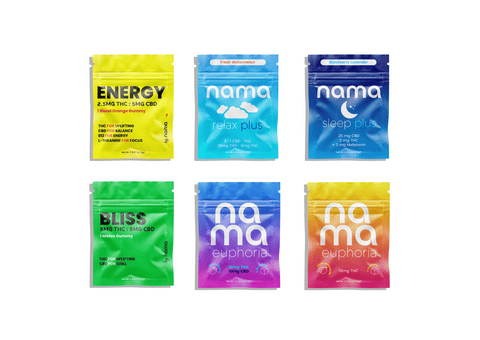
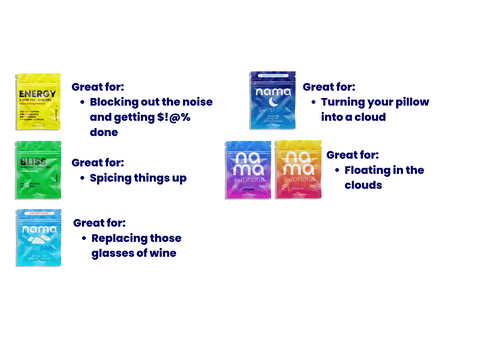
![Buzz Drops™ [THC Drink Drops]](http://www.namacbd.com/cdn/shop/files/nama_thc_buzz_drops.png?v=1711412866&width=480)
![Buzz Drops™ [THC Drink Drops]](http://www.namacbd.com/cdn/shop/files/buzz-drop-wine-comparison.png?v=1736882023&width=480)
![Buzz Packs™ [THC and CBD Powder Drink Mix]](http://www.namacbd.com/cdn/shop/files/nama_buzz_packs_thc_drink_pack_white_background.png?v=1741884660&width=480)
![Buzz Packs™ [THC and CBD Powder Drink Mix]](http://www.namacbd.com/cdn/shop/files/Buzz_Packs_Label.png?v=1741884660&width=480)
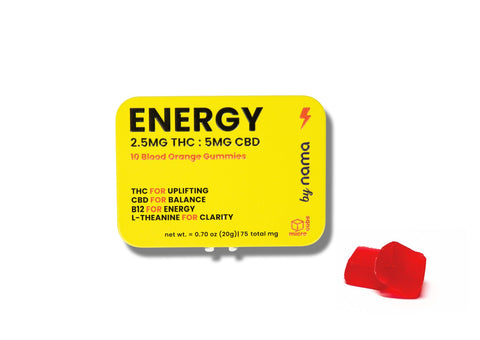
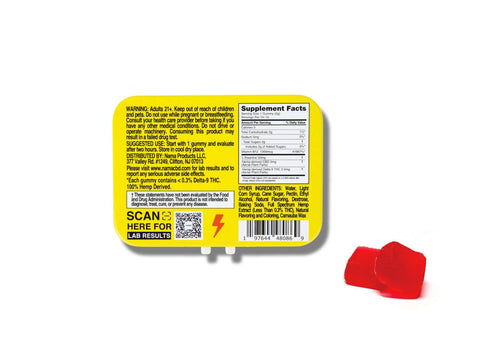
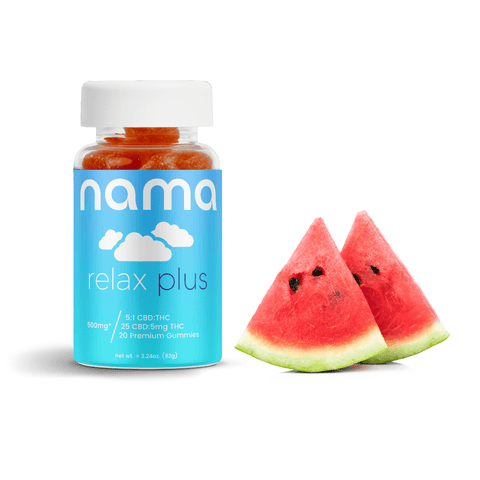
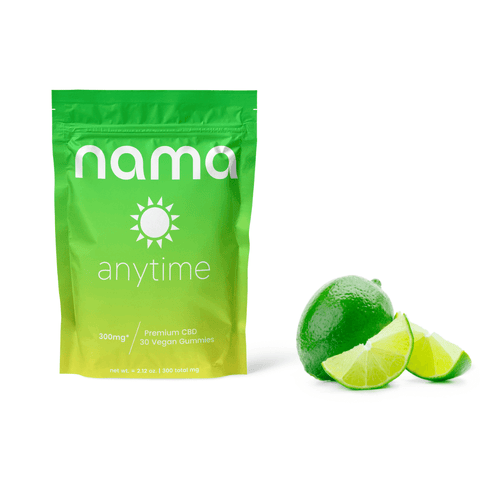
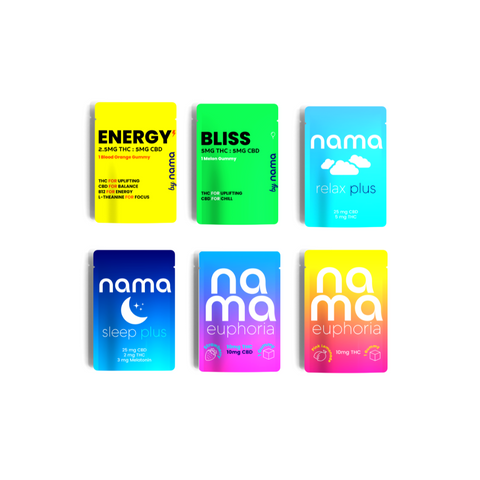
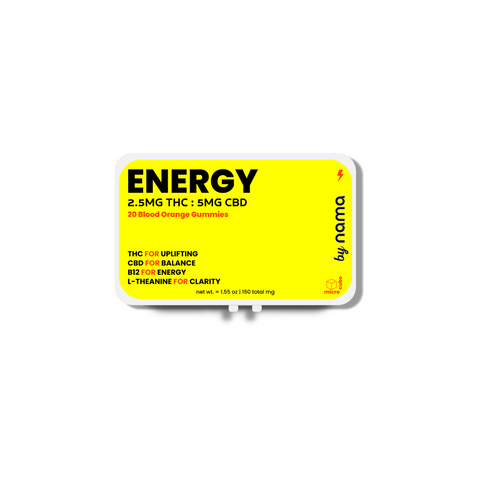
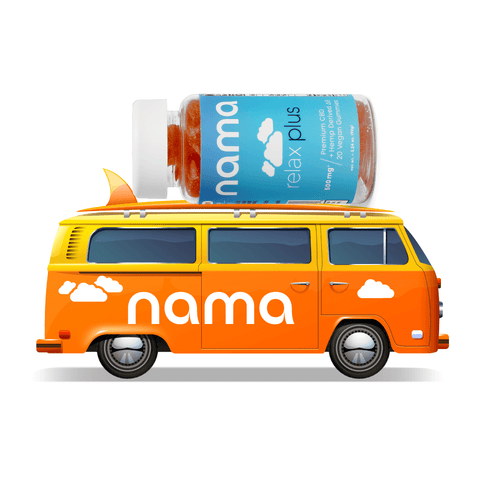
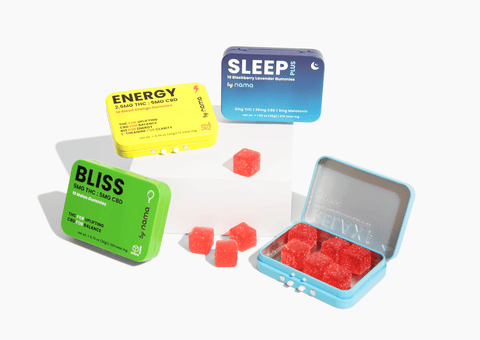
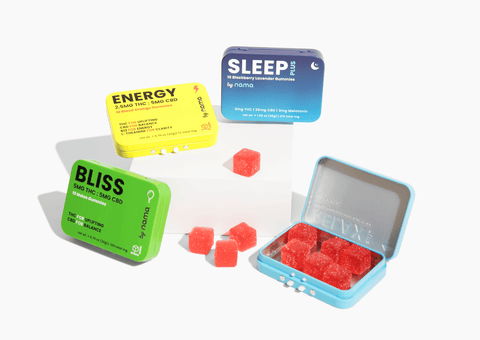
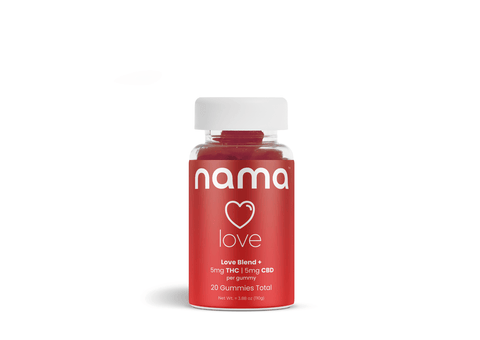
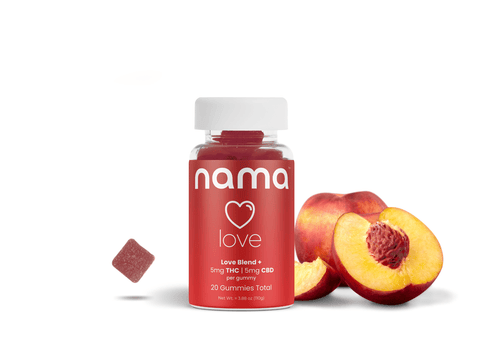
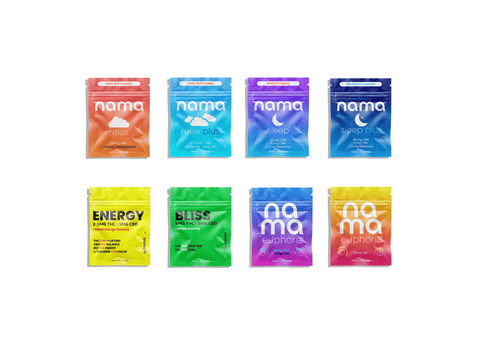
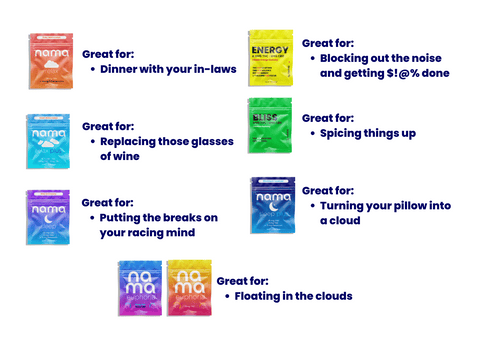



Comments (0)
There are no comments for this article. Be the first one to leave a message!